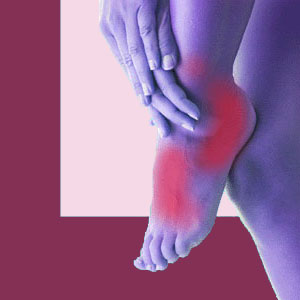
Scoliosis foot drop is a neurological consequence caused by the compression of specific lumbar nerve roots, usually enacted by misaligned central or foraminal canals. Foot drop, more commonly diagnosed formally as dorsiflexion deficit, describes the inability to elevate the frontal foot, causing the patient to ambulate abnormally and possibly have a tendency to stub their toes and fall. Foot drop can be diagnosed and evaluated by any type of physician, but is best managed by a spinal neurologist.
Dorsiflexion deficits can occur unilaterally or bilaterally and can come from 2 distinct mechanisms, both of which involve impingement of one or more of the root tissues which form the sciatic nerve, including L4, L5 and S1. Foot drop can cause functional issues and even predispose the patient to regular injury due to significant falls and balance concerns.
This essay explores the reasons why foot drop might occur in relation to a scoliosis diagnosis. We will detail the mechanisms through which side-to-side spinal curvature can create foot drop, as well as provide a thorough analysis of the condition to assist patients in achieving improved diagnostic and treatment outcomes.
Scoliosis Foot Drop Symptomology
Foot drop might be the exclusive symptom of some forms of scoliosis. However, in most patients, symptoms will be diversified and will likely include general sciatica expressions of pain, tingling, numbness and weakness in areas of the buttocks, legs and/or feet. Foot drop is usually an eventual symptom of sciatica, which occurs after objective weakness and is not likely to occur acutely as an initial expression, unless significant trauma is involved.
Most dorsiflexion deficits begins slowly, with the patient steadily losing feeling and motor function in affected foot or feet. The patients will find it difficult to raise the front of the foot, which is a motion that is necessary for normal ambulation. Instead, the patient will tend to drag their toes or point them straight out when walking, increasing their chances of stubbing the toes or falling if the frontal foot refuses to come of the ground at all.
By the time foot drop typically occurs, may patients find that they no longer have pain in the affected leg, but most will still demonstrate paresthesia and weakness in multiple areas of the lower body.
Foot Drop from Foraminal Stenosis
Foraminal stenosis is a condition defined as reduction in the patency of the opening through which a nerve root uses to leave the spinal anatomy. Virtually all of the nerves which form the complex network of peripheral neurological tissues in our bodies originate as spinal nerve roots, branching off the spinal cord and exiting the vertebral column at defined levels.
Foraminal stenosis is normal to experience, particularly in the neck and lower back regions. Common contributors include disc desiccation, intervertebral herniation, general spinal arthritis and changes in the lordosis of the cervical and lumbar spinal regions. These factors are likely to exist in virtually all adults, regardless of whether they have scoliosis or not.
However, scoliosis can change the patency of the foraminal openings for the worse, as well. On the interior of spinal curvatures, the neural foramen are often decreased in effective size. Although most cases of foraminal stenosis will not compress a nerve, the combination of scoliosis and other contributing factors might produce a symptomatic compressive neuropathy condition that results in foot drop, usually when the L5 nerve is affected. Less commonly, foot drop can also occur when L4 or S1 is affected.
Scoliosis Foot Drop from Central Spinal Stenosis
Central spinal stenosis can also cause compression of the L4, L5 or S1 nerve roots within the central vertebral canal space. The contributing factors to central stenosis are identical to foraminal stenosis, above, including degenerative disc disease, herniated discs and accumulation of osteoarthritic material. When scoliosis also happens to be present in the region, the side-to-side curvature might misalign the central vertebral canal, further reducing its effective size.
When one or more of the nerve roots are compressed within the central canal, the condition might involve minimal expressions, such as sciatica, or may worsen quickly to dire medical emergencies such as cauda equina syndrome. Foot drop is merely one possible expression of cauda equina nerve root compression within the central canal.
Scoliosis > Scoliosis Symptoms > Scoliosis Foot Drop





